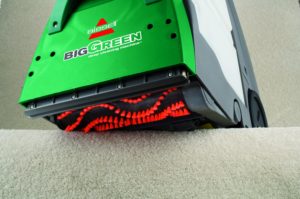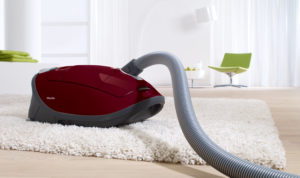
If you’re like most people, when you think of a carpet, you’re probably thinking of saxony, even if you don’t realize it. Saxony carpets are the stereotypical cut-pile carpets found in homes and apartments throughout the country. The basic layout of saxony carpets involves fibers that stand straight up (unlike frieze fibers, which are long, loose, and bent) and evenly cut. Saxony carpets are higher than typical cut-and-loop and berber carpets but aren’t as high as most friezes. Today we’ll examine their pros, cons, durability, and compatibility with pets, children, and various home areas.
What’s the difference between straight and textured saxony?
Straight saxony carpets have a constant, uniform color; they achieve this by running each fiber in the same direction. They’re also known as velvet saxony carpets because they look similar to velvet, although they feel significantly different.
Straight saxony carpets are the more common kind of saxony; you can easily recognize them by passing your hand over the fibers. When you do, the disturbed fibers will take on a different color due to being pushed opposite their natural direction. Although these carpets can look and feel calming, they’re prone to displaying vacuum strokes and footprints due to the fiber alignment.
Textured saxonies, on the other hand, are a more recent design. Also called trackless saxonies, they feature fibers twisted in a variety of directions. As a result, when you pass your hand over them, they don’t change color nearly as much because they’re already reflecting light in many different directions. They’ve gained popularity among homeowners and commercial owners (e.g., landlords, small businesses) interested in saxony carpeting without the tell-tale saxony footprints and vacuum strokes.
What are the pros of saxony carpets?
The main pros of saxony are tied to its timeless quality. It’s eminently recognizable as a prototypical carpet, and even though some might find it boring, it’s never seen as threatening or overly forward. The look works in formal and casual environments, and if you choose the right grade for your needs, it’ll stay in good condition for decades.
What are the cons of choosing a saxony carpet?
The main cons of saxony have to do with aesthetics and quality issues. Aesthetically, people who don’t like saxonies don’t like them because they consider them to be boring and lacking in personality. It’s hard to argue with this; saxonies are designed to blend into the background, much like elevator music. If you’re looking to stand out, you won’t do it with this style. Additionally, it’s hard to tell the quality of a saxony carpet simply by looking at it unless you know what to look for. However, that’s a common issue with carpeting, and you’ll need to do some reading of fine print and warranties if you want to be sure you’re choosing a quality carpet.
How durable are saxony carpets in homes with pets and children?
When the right grade is chosen for the right environment, saxony carpets can be quite durable. You can find them made from a range of fibers, including a range of synthetic fibers including SmartStrand and nylon, as well as natural fibers like wool.
When choosing saxony, keep in mind that durability will depend on several factors and not just on any one. The fiber twist will make a difference, as will the density. Try to keep each variable in mind when making your decision so you don’t overly focus on one to the expense of the rest. A general tip is to prioritize a high twist and density for saxonies you’re going to place in high traffic zones.
Where does saxony work best (and worst) in a home?
You can use saxony just about anywhere in a home since you can get saxony in just about any style and quality level you’re looking for. As we noted above, if you’re looking to install saxony in a busier part of your home, such as in a family room or on your stairs, you’re going to want a higher grade saxony, ideally with a high fiber twist and density. Ideally you’ll also make it a textured saxony so it doesn’t show footprints and vacuum marks nearly as much as a straight saxony would. A straight saxony, on the other hand, will work nicely in formal areas with lower traffic; living rooms, parlors, and bedrooms are good choices.
Do you need particular carpet cleaners or vacuums to maintain saxony carpet?

Fortunately, saxony carpets aren’t picky; unlike soft carpets or various high-pile carpets, you don’t need special carpet cleaners or vacuums to clean or maintain saxony. That said, it’s always a good idea to buy machines that will last as long as your home, rather than as long as your carpets. Why? Because you might find yourself interested in different styles of carpeting over the years, and not every machine out there will cope with them without suffering damage or, in some cases, damaging the carpets themselves.

For carpet cleaners, we recommend a machine used by homeowners and professional carpet cleaners alike: the Bissell 86T3 Big Green. We’ve repeatedly reviewed it (e.g., here and here) and continue to recommend it as a lifelong investment. For vacuuming, we’d suggest either the Miele Complete C3 Soft Carpet or the Miele Compact C2 Electro+. Both have the power to tackle saxony carpeting as well as medium-pile and high-pile carpets; we prefer the Soft Carpet as a machine that can handle every carpet without exception, while we like the Electro+ as a good compromise for families on a slightly smaller budget.
![]() You can buy the Bissell 85T3 Big Green carpet cleaner here on Amazon. You can buy the Miele Complete C3 Soft Carpet here or buy the Miele Compact C2 Electro+ here.
You can buy the Bissell 85T3 Big Green carpet cleaner here on Amazon. You can buy the Miele Complete C3 Soft Carpet here or buy the Miele Compact C2 Electro+ here.
![]() Canadians can buy the Miele Soft Carpet here, the Compact Electro+ here, and the Bissell Big Green here.
Canadians can buy the Miele Soft Carpet here, the Compact Electro+ here, and the Bissell Big Green here.
 If you find our research on PMC helpful, you can follow our efforts to keep maniacally reviewing home cleaning tools by shopping through our links above. We promise to keep fighting the good fight against every horror children, animals, and grown, yet messy humans can inflict upon a clean home.
If you find our research on PMC helpful, you can follow our efforts to keep maniacally reviewing home cleaning tools by shopping through our links above. We promise to keep fighting the good fight against every horror children, animals, and grown, yet messy humans can inflict upon a clean home.

